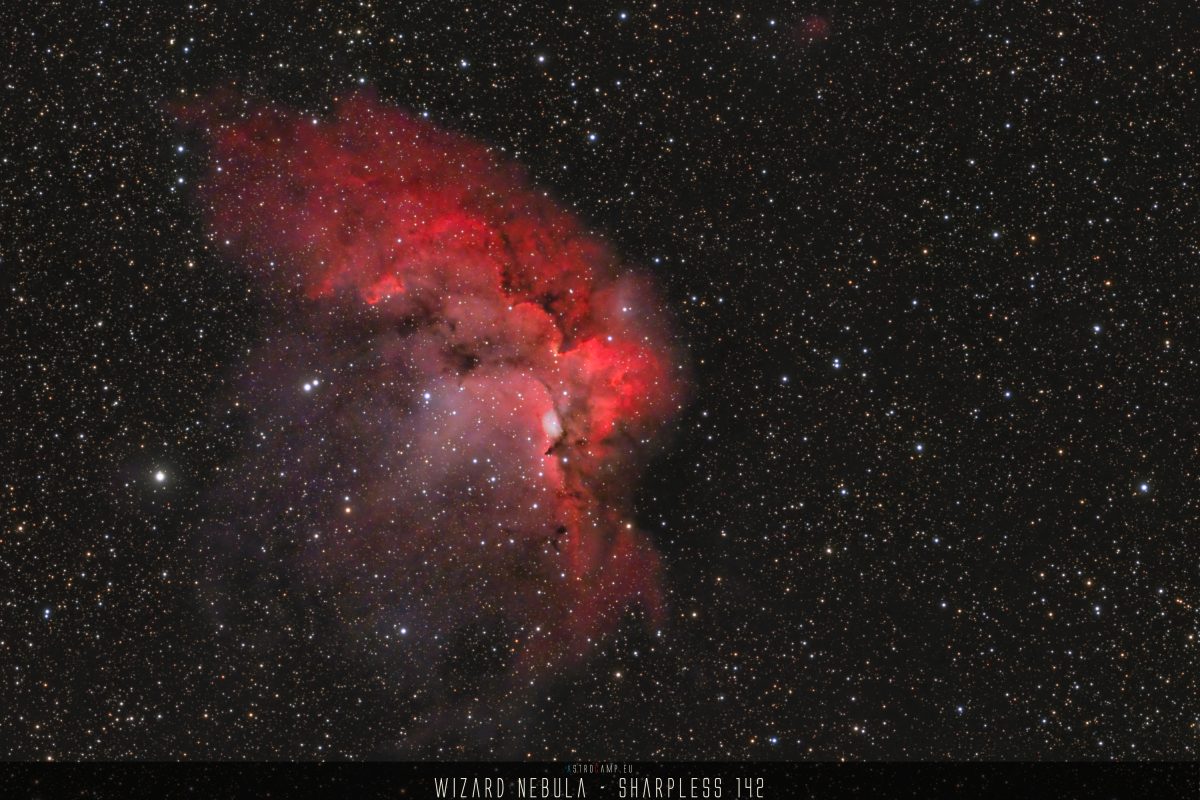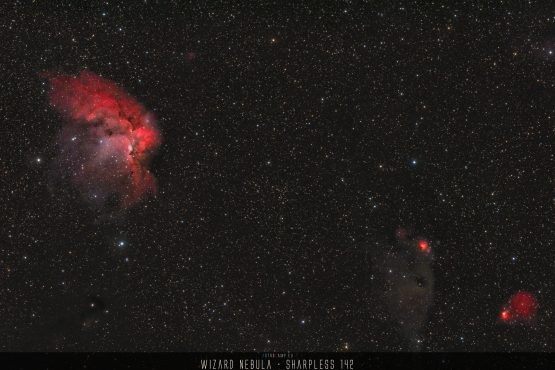The Wizard Nebula is a stunning cosmic cloud surrounding the open star cluster NGC 7380. It is an active star-forming region, where the powerful stellar winds from young, massive stars have sculpted the nebula into its distinctive wizard-like shape. The nebula’s vibrant red hue is due to the ionized hydrogen gas, which emits light when excited by the intense radiation from nearby stars. Astrophotographers often target this object for its intricate details and captivating appearance, especially when using narrowband filters to enhance its structure.
Names and Catalog numbers
- Wizard Nebula
- NGC 7380
- Sh2-142
Position and the cosmic neighborhood
The Wizard Nebula is nestled within the Milky Way’s spiral arms, situated between the constellations Cepheus and Cygnus. It lies near other notable deep-sky objects such as the Bubble Nebula (NGC 7635) and the Cave Nebula (Sh2-155). From the Northern Hemisphere, its location in Cepheus makes it a circumpolar object for many observers, allowing for extended viewing and imaging opportunities throughout the year.
Nice to Know
- The nebula’s shape resembles a sorcerer casting a spell, hence its popular name.
- The central star cluster, NGC 7380, is only about 5 million years old, making it relatively young in astronomical terms.
- Astrophotographers often create “starless” versions of this nebula to highlight its intricate gas structures.
- The Wizard Nebula is a popular target for both narrowband and broadband imaging techniques, each revealing different aspects of its complex structure.
Brightness, distance and size
The Wizard Nebula has an apparent magnitude of 7.2, making it too faint to be seen with the naked eye but accessible to amateur telescopes under dark skies. Located approximately 5,545 light-years from Earth, the nebula spans an impressive 110 light-years in diameter. From our vantage point, it appears to cover about 25 arcminutes of sky, roughly equivalent to the size of the full Moon.


